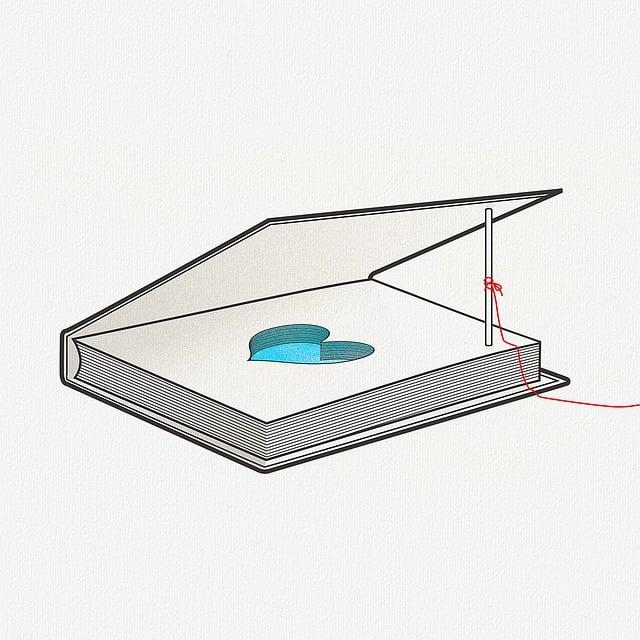Discover the intriguing connection between post-traumatic stress disorder (PTSD) and bruxism, and how trauma can manifest itself in teeth grinding.
1. Understanding the Link: Bruxism as a Secondary Effect of Trauma
When it comes to the understanding of bruxism, it’s important to recognize that it can be more than just a habit or a result of stress. In some cases, bruxism can actually be a secondary effect of trauma. This means that individuals who have experienced trauma, whether physical or psychological, may develop bruxism as a way for their body to cope with the lingering effects.
Here are some key points to consider when it comes to the link between bruxism and trauma:
- Physical trauma: In some cases, bruxism can be a direct result of physical trauma to the head or jaw. This can include accidents, sports injuries, or any other event that causes sudden impact or damage. The body’s response to such trauma is to tighten the jaw muscles, leading to teeth grinding.
- Psychological trauma: Emotional or psychological trauma, such as experiencing abuse, can also trigger bruxism. When individuals are under prolonged stress or in a state of anxiety, they may grind their teeth as a subconscious way of releasing tension and dealing with the emotional turmoil they are experiencing.
- Post-traumatic stress disorder (PTSD): Bruxism has also been linked to PTSD, a mental health condition that often results from experiencing or witnessing a traumatic event. Those living with PTSD may exhibit teeth grinding as a symptom, which can further contribute to their overall distress.
2. Unveiling the Connection: Exploring PTSD as a Trigger for Bruxism
Investigating the Link: Exploring PTSD as a Trigger for Bruxism
Post-traumatic stress disorder (PTSD) is a complex mental health condition that can have profound effects on an individual’s well-being. However, recent research suggests that its impact may extend beyond emotional and psychological realms. Studies have begun to shed light on a possible connection between PTSD and bruxism, a condition characterized by excessive teeth grinding and clenching.
Here are some key insights that have emerged from scientific investigations into this intriguing link:
- Stress and anxiety: PTSD is often accompanied by high levels of stress and anxiety. It is believed that these intense emotions contribute to the development and exacerbation of bruxism in individuals with PTSD.
- Physiological arousal: Both PTSD and bruxism share a common feature—increased physiological arousal. This heightened state of activation of the body’s stress response system can manifest in various ways, including through teeth grinding during sleep or periods of wakefulness.
- Impact on sleep quality: One of the detrimental consequences of both PTSD and bruxism is disrupted sleep patterns. Those with PTSD often experience nightmares and heightened arousal during sleep, while bruxism can lead to uncomfortable jaw pain and difficulty in achieving restorative sleep.
Recognizing the connection between PTSD and bruxism is crucial as it allows healthcare professionals to approach treatment from a holistic perspective. By addressing the underlying PTSD symptoms, individuals may find relief not only from their psychological distress but also from the associated bruxism symptoms. Further research into this complex relationship is necessary to develop effective strategies for managing and treating these conditions.
3. The Complex Relationship: How Trauma Can Lead to Bruxism in PTSD Patients
Linking the effects of trauma with the development of bruxism in patients with post-traumatic stress disorder (PTSD) reveals a complex relationship that deserves attention. Bruxism, commonly known as teeth grinding or clenching, is a parafunctional habit that can lead to various dental problems and worsen the symptoms of PTSD. Here, we explore the intricate connections between trauma and bruxism, shedding light on the underlying mechanisms and potential treatment options.
1. Neurobiological Factors: Trauma can cause dysregulation in the body’s stress response system, leading to hyperarousal and an overactive sympathetic nervous system. This persistent state of vigilance and heightened anxiety can manifest as bruxism in individuals with PTSD. Research suggests that increased levels of cortisol, a stress hormone, may play a role in activating the subcortical motor pathways involved in tooth grinding and clenching.
2. Psychological Factors: Bruxism serves as a coping mechanism for individuals struggling to manage overwhelming emotions associated with traumatic experiences. The repetitive, forceful jaw movements provide temporary relief from tension, intruding thoughts, or nightmares. This habit can become deeply ingrained over time, exacerbating the symptoms of PTSD while further eroding the patient’s quality of life.
3. Consequences and Treatment Approaches: Bruxism in PTSD patients not only contributes to dental problems like tooth wear, fractures, and temporomandibular joint disorders, but it also triggers additional stress and sleep disturbances. Addressing the underlying trauma through psychotherapy, medication, and stress management techniques can help alleviate both the psychological and physiological aspects of bruxism. Additionally, wearing a custom night guard can protect the teeth and reduce the damage caused by grinding and clenching during sleep.
4. Psychological and Physical Implications: The Impact of Trauma on Teeth Grinding
Teeth grinding, scientifically known as bruxism, is a common condition that affects both adults and children. However, recent studies have indicated a correlation between trauma and an increase in teeth grinding incidents. The psychological and physical implications of trauma-induced bruxism are significant, highlighting the importance of addressing and managing this condition.
Psychological Implications:
- Stress and anxiety: Traumatic events often lead to heightened stress levels and anxiety, triggering an increase in teeth grinding. This can result in sleep disturbances, fatigue, and a decreased quality of life.
- Post-traumatic stress disorder (PTSD): Individuals suffering from PTSD may exhibit bruxism as a manifestation of their psychological distress. This constant grinding can worsen their emotional well-being and delay their recovery from trauma.
- Mental health issues: Teeth grinding can also be linked to various mental health conditions like depression and panic disorders. It is crucial to address and treat these underlying psychological issues alongside managing bruxism itself.
Physical Implications:
- Dental damage: The excessive forces exerted during teeth grinding can lead to worn tooth enamel, chipping, and fractures. Over time, this can necessitate dental procedures like fillings, crowns, and even root canals.
- Jaw pain and temporomandibular joint (TMJ) disorders: Prolonged bruxism can strain the jaw muscles, causing pain and discomfort. In severe cases, it may result in TMJ disorders, characterized by jaw clicking, locking, or difficulty in opening and closing the mouth.
- Headaches and migraines: The constant clenching and grinding of teeth can trigger headaches, migraines, and facial pain. These symptoms can significantly impact individuals’ daily functioning and overall well-being.
Recognizing the psychological and physical implications of trauma-induced teeth grinding is crucial for effective intervention and management. Seeking professional dental and psychological assistance can help address these implications, improve oral health, and enhance overall well-being.
5. Connecting the Dots: Unmasking the Mechanism behind Bruxism in PTSD
Bruxism, commonly known as teeth grinding, is a well-documented phenomenon that affects numerous individuals. However, recent studies have shed light on a particular link between bruxism and post-traumatic stress disorder (PTSD). Understanding the mechanism behind this connection is essential for both healthcare professionals and individuals suffering from these conditions.
One possible explanation for the correlation between bruxism and PTSD lies in the heightened state of arousal experienced by individuals with PTSD. The hyperarousal symptom of PTSD can manifest during sleep, leading to involuntary teeth grinding. This constant grinding puts excessive pressure on the teeth, leading to enamel wear, jaw pain, and other oral health issues.
Another factor to consider is the common co-occurrence of sleep disorders in individuals with PTSD. Insomnia and nightmares are frequently reported in PTSD patients, and these disturbances can exacerbate bruxism. Disrupted sleep can increase muscle activity in the jaw, making teeth grinding more likely.
- Treatments for bruxism in PTSD:
- Psychotherapy: Addressing the underlying causes of both PTSD and bruxism through therapy can help alleviate grinding symptoms.
- Relaxation techniques: Incorporating relaxation exercises into daily routines can reduce stress levels and decrease the likelihood of bruxism episodes.
- Dental interventions: Mouth guards or splints can protect the teeth from grinding and relieve the associated pain and discomfort.
In conclusion, unraveling the mechanism connecting bruxism and PTSD provides valuable insights into understanding these conditions. By recognizing the relationship between the two, healthcare professionals can develop targeted treatment plans to mitigate the impact of bruxism in individuals with PTSD and improve their overall oral and mental well-being.
6. Trauma and Tooth Grinding: Delving into the Science of Bruxism as a Secondary Symptom
Bruxism, commonly known as tooth grinding, is a condition that affects millions of people worldwide. While many individuals experience this as a primary symptom, it can also manifest as a secondary symptom of trauma. Understanding the science behind bruxism as a secondary symptom is key to effectively addressing and managing this dental issue.
When an individual experiences trauma, whether physical or emotional, it can trigger a series of physiological responses in the body. One such response is an increase in muscle tension, including the muscles responsible for jaw movement. This heightened muscle tension can lead to bruxism, causing the individual to unconsciously grind or clench their teeth.
The connection between trauma and tooth grinding is complex and multi-faceted. Here are some key points to consider:
- Bruxism as a secondary symptom is often observed in individuals who have experienced significant trauma, such as accidents, physical assaults, or emotional distress.
- Research indicates that the brain’s response to trauma influences the functioning of the central nervous system, leading to an increase in muscle activity, including the muscles involved in jaw movement.
- In some cases, the grinding or clenching of teeth due to trauma-induced bruxism may be a subconscious coping mechanism, providing a sense of control or alleviating anxiety.
Understanding the underlying science of bruxism as a secondary symptom is crucial for dental professionals to provide appropriate treatment and support to patients. By addressing the trauma and its effects on muscle tension, it is possible to help individuals manage their tooth grinding and prevent further dental complications.
7. Silent Suffering: Shedding Light on the Relationship between PTSD and Teeth Clenching
Post-traumatic stress disorder (PTSD) is a condition often associated with various psychological symptoms such as anxiety, nightmares, and flashbacks. However, what many people overlook is the physical toll it can take on the body. Teeth clenching, also known as bruxism, is a common yet silent symptom experienced by individuals with PTSD. Shedding light on the relationship between PTSD and teeth clenching is crucial for understanding the full impact of this disorder.
Here are some key insights into the connection between PTSD and teeth clenching:
- Prevalence: Studies have shown that individuals with PTSD are more likely to suffer from bruxism compared to those without the disorder. This highlights the direct correlation between the two.
- Causes: It is believed that teeth clenching in PTSD patients may stem from heightened anxiety levels and elevated stress hormone levels. The subconscious manifestation of trauma during sleep can lead to increased jaw tension.
- Consequences: Bruxism can have detrimental effects on oral health, including tooth damage, jaw pain, and headaches. If left untreated, it can worsen existing PTSD symptoms, creating a vicious cycle of physical and psychological distress.
Recognizing and addressing teeth clenching as a symptom of PTSD is crucial to providing holistic care for individuals affected by the disorder. Dental professionals and mental health practitioners can collaborate to develop effective treatment plans that not only focus on alleviating the dental consequences but also address the underlying trauma. Raising awareness about this relationship is essential to ensure that individuals suffering from PTSD receive comprehensive care and support.
8. Treating the Root Cause: Addressing Bruxism through PTSD-focused Interventions
Bruxism, the involuntary grinding or clenching of teeth, often stems from underlying psychological factors such as stress, anxiety, or trauma. In particular, individuals with post-traumatic stress disorder (PTSD) may experience heightened levels of bruxism as a result of persistent sleep disturbances and hyperarousal. By targeting the root cause, namely PTSD, through specialized interventions, effective treatment for bruxism can be achieved.
When it comes to addressing bruxism in individuals with PTSD, a comprehensive approach is needed to alleviate both the symptoms of bruxism and the underlying psychological distress. Here are some key interventions:
- Cognitive Behavioral Therapy (CBT): This evidence-based therapy focuses on modifying negative thought patterns and behaviors associated with both PTSD and bruxism. By identifying triggers and developing coping mechanisms, CBT empowers individuals to manage their stress and anxiety effectively, thereby reducing bruxism episodes.
- Eye Movement Desensitization and Reprocessing (EMDR): This therapy targets traumatic memories by facilitating their reprocessing through bilateral eye movements. By reducing distressing emotions and their associated physical symptoms, EMDR can help alleviate bruxism in individuals with PTSD.
- Stress Management Techniques: Engaging in stress-reducing activities such as deep breathing exercises, meditation, physical exercise, and progressive muscle relaxation can help individuals with PTSD manage their overall stress levels and subsequently alleviate bruxism.
- Sleep Hygiene: Establishing a regular sleep routine, creating a calming sleep environment, and avoiding stimulants can improve sleep quality for individuals with PTSD, reducing bruxism-related sleep disturbances.
By focusing on addressing the root cause of bruxism through targeted interventions for PTSD, individuals can not only find relief from bruxism symptoms but also experience improved overall well-being and quality of life.
9. Ease the Strain: Implementing Therapeutic Approaches for Bruxism in Trauma Survivors
Implementing therapeutic approaches for bruxism in trauma survivors is crucial to alleviate the strain caused by this condition. Here are some effective strategies to ease the impact of bruxism in trauma survivors:
1. Cognitive Behavioral Therapy (CBT): CBT can help trauma survivors identify and modify the thoughts and behaviors that contribute to bruxism. By learning adaptive coping skills and stress management techniques, individuals can reduce the triggers that lead to teeth grinding and clenching.
2. Relaxation techniques: Encouraging trauma survivors to engage in relaxation techniques such as deep breathing exercises, progressive muscle relaxation, and guided imagery can be highly beneficial. These practices can help decrease overall tension and promote a more relaxed state, reducing the likelihood of bruxism episodes.
3. Dental interventions: Seeking dental advice is crucial to address the physical aspect of bruxism. Custom mouthguards or splints can be worn during sleep to protect teeth from damage caused by grinding and clenching. These devices can also help relax the muscles and joints associated with bruxism.
4. Holistic approaches: Some trauma survivors may benefit from complementary therapies such as acupuncture, biofeedback, or aromatherapy. While the effectiveness of these treatments may vary among individuals, they can provide additional support in managing both the physical and psychological symptoms of bruxism.
It is important to note that implementing therapeutic approaches for bruxism in trauma survivors should be tailored to each individual’s specific needs and circumstances. Working with healthcare professionals specializing in trauma and dental care can ensure a holistic approach to address both the underlying trauma and the resultant bruxism.
10. Managing the Fallout: Supportive Strategies to Combat Bruxism Linked to PTSD
Living with post-traumatic stress disorder (PTSD) can have a profound impact on many aspects of a person’s life, including their dental health. Bruxism, commonly known as teeth grinding, is a prevalent condition often linked to PTSD. Fortunately, there are supportive strategies that can help manage the fallout of bruxism in individuals suffering from PTSD.
1. Seek professional help: If you suspect that you have bruxism linked to your PTSD, it is important to consult with a healthcare professional. They can provide a proper diagnosis, offer guidance, and help develop a tailored treatment plan.
2. Practice stress reduction techniques: Since stress is a significant trigger for bruxism, finding healthy ways to manage stress can be beneficial. Consider incorporating activities such as meditation, deep breathing exercises, or yoga into your daily routine.
3. Utilize nightguards: Nightguards, custom-made dental appliances that fit over your teeth, can provide a protective barrier and prevent grinding during sleep. These can be obtained from your dentist and significantly reduce the damage caused by bruxism.
In conclusion, bruxism can be a secondary effect of trauma-induced PTSD. Recognizing this link is crucial in addressing and managing the symptoms of both conditions. By understanding the impact of trauma on oral health, healthcare professionals can offer more holistic treatment approaches. Early intervention and interdisciplinary collaboration are key in providing optimal care to individuals affected by this complex interplay between PTSD and bruxism.







